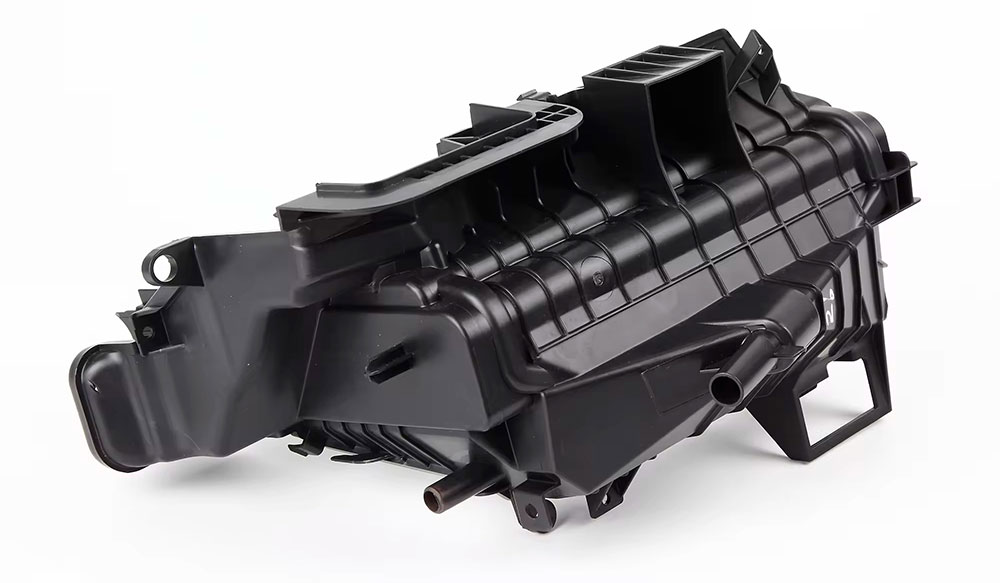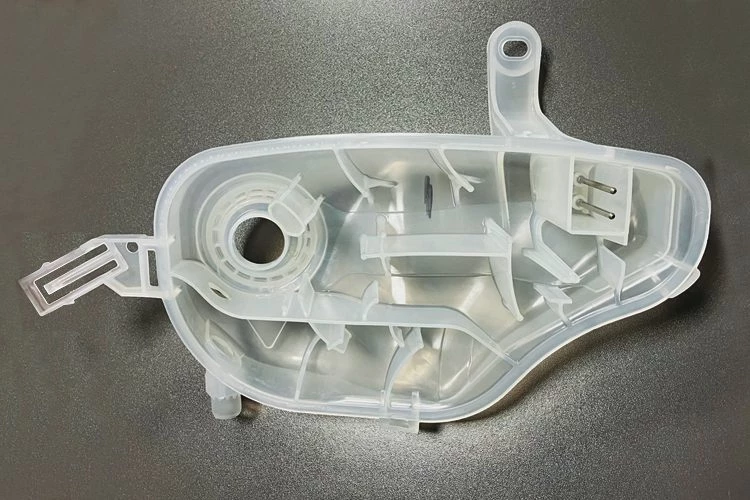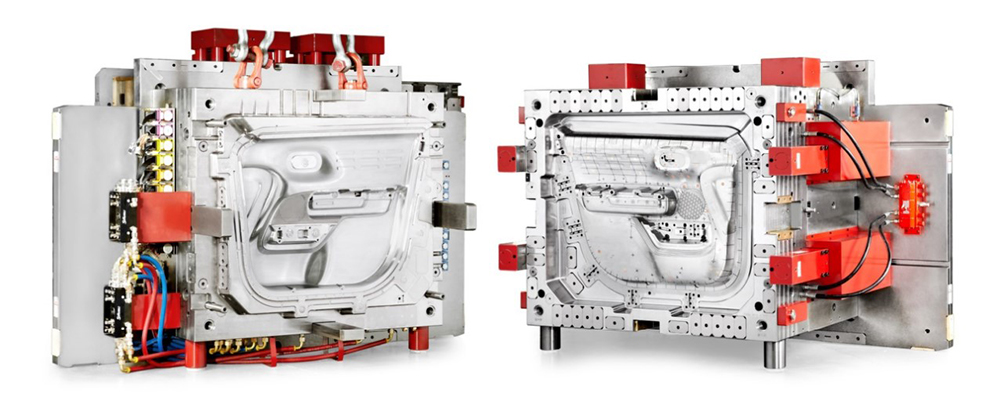15 Most Common Injection Molded Plastic Materials: A Guide to Chemical Resistance and Durability
Introduction
Injection molding has become a standard manufacturing process for producing high-quality plastic components. In today’s competitive market, companies across industries—including automotive, consumer electronics, and medical devices—rely on injection molding in automotive industry and beyond to achieve high efficiency and consistency in production. This guide specifically focuses on the most common injection molded plastic materials used in automotive applications, with an emphasis on their chemical resistance and durability.
The article will review various high-performance plastics, discuss their properties and applications, and analyze the benefits and limitations of each. Additionally, we will cover the evolution of injection molding technologies, the advantages of outsourcing these services, and why choosing a reliable partner like Huazhi Technology can make a significant difference in your manufacturing process. By the end of this guide, you’ll have a comprehensive understanding of the different plastics available for injection molding, their suitability in the automotive industry, and how to select the best materials to ensure product longevity and performance.
Understanding the properties and applications of the most common injection molded plastic materials is essential for manufacturing durable and cost-effective automotive parts. Let’s dive into the detailed exploration of these materials and their real-world applications.
History of Injection Molding in the Automotive Industry
In the early automotive industry, almost all car components were manufactured from metal. While metal provided structural strength, it also resulted in heavy, inefficient vehicles. The introduction and rapid evolution of plastic materials in the mid-20th century revolutionized automotive design and manufacturing.
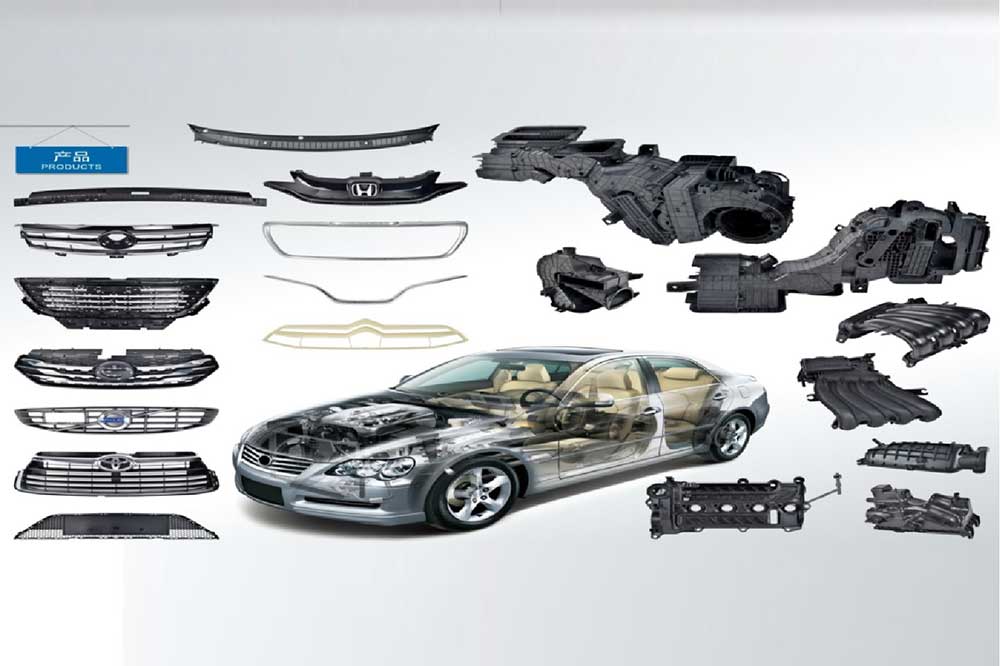
Early Adoption and Evolution
During the 1940s and 1950s, early thermoplastics began to be incorporated into automotive interiors for non-structural components, such as knobs, handles, and decorative trims. These early applications demonstrated that plastics could offer advantages like weight reduction, cost savings, and flexibility in design.
By the 1970s, plastic injection molding was adopted for producing parts that previously were made exclusively of metal. Manufacturers started to use polymers for components that required not only aesthetic appeal but also improved performance under stress. Innovations in polymer chemistry led to the development of materials such as ABS (Acrylonitrile-Butadiene-Styrene), which provided excellent impact resistance and durability.
Advancements in Plastic Materials and Processes
In the 1980s and 1990s, the automotive industry witnessed a significant shift as plastic components began to replace even some structural metal parts. This era saw the introduction of advanced plastics like polycarbonate (PC), polypropylene (PP), and polyamide (PA) variants, which brought benefits such as thermal stability, chemical resistance, and improved design flexibility.
The concept of most common injection molded plastic in the automotive industry took off as manufacturers began to standardize processes to meet high-volume production requirements while ensuring part consistency and performance. Over time, improvements in mold design, automation, and quality control have allowed injection molding to become a dominant technique for producing everything from dashboards to engine covers.
Current Trends and Future Outlook
Today, nearly 50% of a vehicle’s volume is composed of injection-molded plastic components. The evolution of gas assist injection molding, multi-shot molding, and even micro injection molding has pushed the boundaries of what can be achieved with plastic. Companies rely on these methods to create parts with complex geometries, integrated features, and superior surface finishes.
Continued advances in material science, digital simulation, and process automation are expected to further enhance the performance and economic benefits of injection molding in the automotive industry. This ongoing evolution underscores the importance of selecting the right injection molding in automotive industry partner—one that understands both the history and future trends of the technology.
Advantages of Injection Molding in Automotive Applications
The application of injection molding in the automotive industry offers numerous benefits that have driven its widespread adoption. This section examines the technical and economic advantages of injection molding, especially when it comes to manufacturing high-quality automotive components from the most common injection molded plastic.
Consistency and Precision
One of the primary advantages of injection molding is its ability to produce components with outstanding precision and repeatability. Modern injection molding machines are equipped with advanced controls that maintain tight tolerances (often within ±0.003 inches) over millions of cycles. This precision is critical for automotive parts, where even minor deviations can impact performance and safety.
-
Dimensional Accuracy: Ensures that every produced part meets exact specifications.
-
Repeatable Process: Metal molds guarantee uniformity across large production runs.
-
Surface Quality: Mold design and process optimization result in smooth, high-quality surface finishes that often eliminate the need for additional post-processing.
Cost-Effective Scalability
Although the upfront cost for mold fabrication is significant, injection molding rapidly becomes cost-efficient when scaled up. The economic benefits include:
-
Lower Per-Unit Costs: As production volume increases, the cost per unit decreases significantly.
-
Energy Efficiency: Modern machines optimize injection pressure, reducing energy consumption over high-volume runs.
-
Tooling Longevity: With proper maintenance, high-quality molds can last hundreds of thousands to millions of cycles, ensuring sustained cost efficiency over time.
Material Versatility and Performance
Injection molding can process a wide range of polymers, each with specific chemical resistance and mechanical properties suited for various automotive applications.
-
ABS: Offers excellent impact resistance and is used for interior panels and trim.
-
Polycarbonate (PC): Known for optical clarity and toughness; ideal for headlights and other transparent parts.
-
Polypropylene (PP): Resistant to chemicals and fatigue; used in bumpers and battery covers.
-
Nylon (PA) and Polyoxymethylene (POM): Provide high strength and wear resistance, suitable for gears and fuel system components.
Additionally, by incorporating additives and reinforcements, such as glass fibers or carbon fibers, the mechanical properties of these most common injection molded plastic materials can be significantly enhanced.
Aesthetic and Functional Advantages
Injection molding allows for incredible design flexibility, permitting both aesthetic and functional improvements:
-
Integrated Design: Complex designs with built-in ribs, textures, or variable wall thickness can improve both strength and appearance.
-
Color Consistency: Pre-colored resins can be used to achieve uniform color throughout the part, reducing or eliminating the need for painting.
-
Customizable Finishes: Different mold surface treatments (e.g., polishing, texturing) offer various finishes from glossy to matte, catering to diverse design requirements.
Environmental Impact and Efficiency
The technology also offers environmental benefits:
-
Material Efficiency: Reduced waste through optimized mold designs, such as gas assist methods.
-
Lower Energy Consumption: Innovations in process control reduce energy needs during production.
-
Recyclable Materials: Many injection-molded plastics are fully recyclable, contributing to sustainable manufacturing practices.
Applications of Injection Molding in Automotive Production
Injection molding has dramatically transformed automotive manufacturing by enabling the production of high-quality, durable, and lightweight plastic parts. This section will delve into various automotive applications, emphasizing the role of the most common injection molded plastic in these components.
Under-the-Hood Components
Under-the-hood parts have long benefited from injection molding due to their need for heat resistance, mechanical strength, and lightweight properties. Key components include:
-
Engine Covers: Typically made from high-temperature polymers like nylon or PEEK, these covers need to withstand thermal stresses.
-
Oil Pans: Often produced from polypropylene, oil pans benefit from the lightweight and corrosion-resistant properties of molded plastics.
-
Intake Manifolds: These are designed to optimize airflow and are frequently made from reinforced plastics to handle heat and pressure.
Exterior Components
The use of injection molding in exterior automotive components is driven by the need for both functional performance and aesthetic appeal:
-
Bumpers: Injection molding allows the integration of energy-absorbing structures within bumpers while maintaining a smooth outer finish. Materials such as ABS or TPO are widely employed.
-
Grilles and Fascia: These parts are often produced using polycarbonate or reinforced polypropylene, ensuring impact resistance and design versatility.
-
Lighting Housings: Injection molded housings for headlights and taillights provide excellent dimensional stability, optical clarity, and weather resistance.
Interior Components
The interior of a vehicle is not just about functionality but also the visual and tactile experience. Injection molding is utilized to produce several interior components:
-
Dashboards and Panels: High-precision injection molding helps create visually appealing and durable dashboard components, often using materials like ABS and PC-ABS.
-
Door Panels and Center Consoles: These parts often incorporate intricate designs and are made from materials that offer both durability and a high-quality finish.
-
Trim and Fittings: Injection molding allows for the production of components that offer both robust performance and customizable aesthetics, catering to the varied tastes of consumers.
Automotive Injection Molding Materials
Choosing the right material is paramount in ensuring that injection molded components meet the stringent requirements of the automotive industry. Below is an overview of the most common injection molded plastic materials used in automotive applications, along with their chemical resistance, durability, and typical applications.
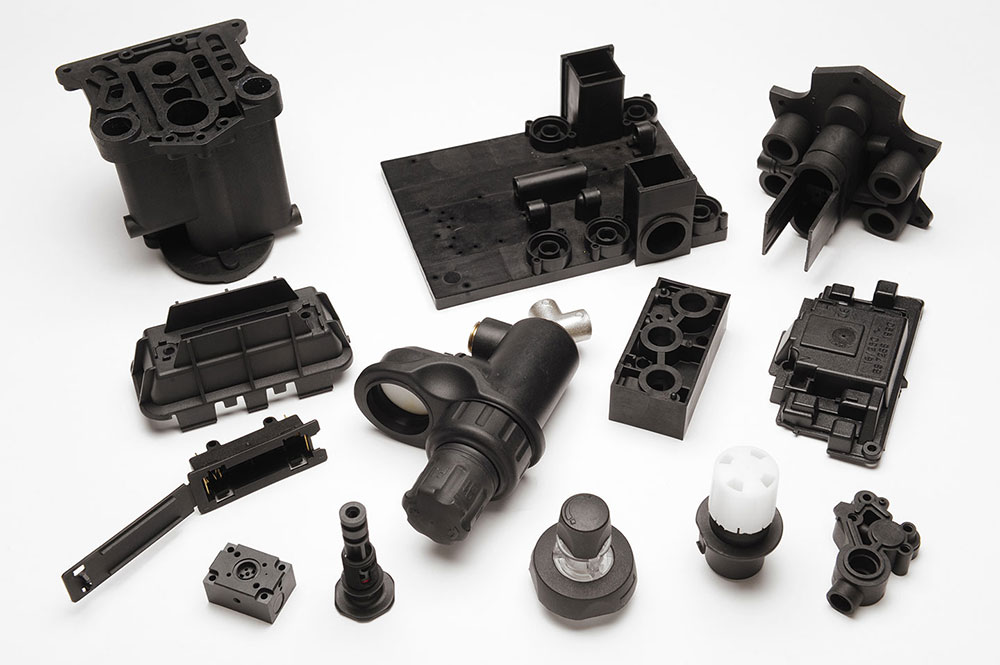
1. Acrylonitrile-Butadiene-Styrene (ABS)
-
Properties: Excellent impact resistance, good rigidity, and moderate chemical resistance.
-
Applications: Dashboard components, trim panels, and interior fittings.
-
Advantages: Offers a balance between strength and processability with a high-quality finish.
2. Polycarbonate (PC)
-
Properties: Exceptional optical clarity, high impact resistance, and heat resistance.
-
Applications: Headlight lenses, instrument panels, and exterior covers.
-
Advantages: Provides durability and excellent surface finish, ideal for components that require transparency.
3. ABS/Polycarbonate (PC-ABS)
-
Properties: Combines the toughness of ABS with the heat resistance of PC.
-
Applications: Automotive housings, exterior trim, and structural components.
-
Advantages: Offers enhanced strength and thermal stability for high-performance automotive applications.
4. Polypropylene (PP)
-
Properties: Lightweight, excellent chemical resistance, and high fatigue resistance.
-
Applications: Bumpers, battery compartments, and interior trims.
-
Advantages: Economical, with excellent resistance to chemicals and environmental stress cracking.
5. Polystyrene (PS)
-
Properties: Good dimensional stability and easy to process.
-
Applications: Non-structural components such as casings and handles.
-
Advantages: Low cost and high clarity but limited in impact resistance.
6. Polyoxymethylene (POM)
-
Properties: High stiffness, low friction, and excellent dimensional stability.
-
Applications: Gears, bearings, and fuel system components.
-
Advantages: Ideal for precision components requiring high mechanical strength and wear resistance.
7. Nylon66 (PA66)
-
Properties: Superior wear resistance, strength, and chemical resistance.
-
Applications: Engine components, oil pans, and structural supports.
-
Advantages: High performance in demanding applications with excellent heat resistance.
8. Polymethyl Methacrylate (PMMA)
-
Properties: High transparency, weather resistance, and rigidity.
-
Applications: Headlight covers, instrument clusters, and display panels.
-
Advantages: Provides a glass-like appearance with excellent resistance to UV degradation.
9. High-Density Polyethylene (HDPE)
-
Properties: Excellent impact resistance, chemical resistance, and durability.
-
Applications: Under-the-hood components and exterior trims.
-
Advantages: Robust and cost-effective, suitable for parts exposed to harsh environmental conditions.
10. Low-Density Polyethylene (LDPE)
-
Properties: Flexibility, toughness, and impact resistance.
-
Applications: Flexible parts, hoses, and seals in automotive interiors.
-
Advantages: Offers high ductility, ideal for components that require flexibility.
11. Polyethylene Terephthalate (PET)
-
Properties: High tensile strength, chemical resistance, and transparency.
-
Applications: Light covers, reflective elements, and trims.
-
Advantages: Offers excellent physical properties and is highly recyclable.
12. Polybutylene Terephthalate (PBT)
-
Properties: High dimensional stability, mechanical strength, and resistance to chemicals.
-
Applications: Electrical connectors and automotive interior parts.
-
Advantages: Balances stiffness with processability, ideal for precision components.
13. Polyphenylene Sulfide (PPS)
-
Properties: High thermal stability, chemical resistance, and dimensional stability.
-
Applications: High-temperature automotive components, such as engine bay parts.
-
Advantages: Suitable for applications that require resistance to heat and aggressive chemicals.
14. Thermoplastic Elastomers (TPE)
-
Properties: Flexible, soft-touch, and excellent impact resistance.
-
Applications: Seals, gaskets, and soft-touch interior trims.
-
Advantages: Combines the processing benefits of thermoplastics with the elasticity of rubbers.
15. Thermoplastic Vulcanizates (TPV)
-
Properties: Superior elasticity, excellent durability, and high resistance to aging.
-
Applications: Automotive weather stripping, sealants, and vibration damping components.
-
Advantages: Provides long-term performance in dynamic environments while maintaining flexibility.
A comprehensive understanding of these most common injection molded plastic materials is essential for optimizing part performance, ensuring chemical resistance, and enhancing durability in automotive applications.
Huazhi’s Automotive Injection Molding Services
At Huazhi Technology, we pride ourselves on offering high-quality and innovative injection molding solutions tailor-made for the automotive industry. Our automotive injection molding services incorporate the latest in processing technology, design optimization, and quality control to produce components that meet rigorous industry standards.
Our Capabilities Include:
-
Custom Mold Design & Fabrication: Utilizing advanced CAD/CAM systems, we design molds specifically for automotive components, ensuring precise cavity and core configurations.
-
Multi-Cavity and Gas Assist Technologies: We employ multi-cavity molds and gas assist injection molding techniques to increase production efficiency and reduce material usage, providing superior part integrity and surface finish.
-
Material Expertise: Our extensive knowledge in processing most common injection molded plastic materials—from ABS to PPS—ensures the right material is used to meet specific performance criteria such as chemical resistance and mechanical durability.
-
Quality Assurance Programs: Our process includes rigorous in-line inspections, CMM (Coordinate Measuring Machine) checks, and advanced testing methods (e.g., thermal imaging and ultrasonic testing) to ensure each part meets the highest quality standards.
-
After-Sales Support: We offer comprehensive support including maintenance, technical consultation, and post-production services to help our partners optimize their production process continuously.
By choosing Huazhi Technology as your injection molding partner, you gain access to a dedicated team that combines decades of experience with state-of-the-art manufacturing capabilities. We guarantee competitive pricing, rapid turnaround times, and a commitment to excellence that has made us a trusted leader in the injection molding automotive industry.
Conclusion
Injection molding is indispensable in the automotive industry, offering unmatched production efficiency, consistency, and design versatility. Understanding the properties of the most common injection molded plastic materials and their respective applications can greatly influence the durability and performance of automotive components. When combined with advanced techniques like gas assist injection molding, manufacturers can achieve significant improvements in quality, cycle time, and cost-effectiveness.
Choosing the right injection molding partner is essential. Huazhi Technology offers state-of-the-art manufacturing capabilities, expert technical support, and a proven track record in delivering high-quality automotive parts. We invite you to leverage our expertise and take advantage of our comprehensive services for your injection molding needs.
📩 Learn more about Huazhi’s injection molding services and parts, contact Huazhi Technology today to discuss your project requirements and receive a free, no-obligation quote!
Frequently Asked Questions (FAQs)
Q1: What makes gas assist injection molding advantageous in automotive applications?
Gas assist injection molding allows for the production of complex, large parts with reduced material usage and shorter cycle times. It also results in improved surface finish and reduced internal stresses, making it ideal for components requiring high performance.
Q2: Which materials are most common in automotive injection molding?
The most common injection molded plastic materials in the automotive industry include ABS, polycarbonate (PC), polypropylene (PP), and nylon, among others. Each offers unique properties in terms of durability, chemical resistance, and impact strength.
Q3: How does Huazhi ensure consistent quality in automotive parts?
Huazhi employs advanced CNC technology, rigorous quality control processes, and continuous process optimization to ensure that every part meets stringent automotive standards.
Q4: Can Huazhi handle both low and high volume production?
Yes, Huazhi has scalable manufacturing capabilities that can efficiently produce both low volume prototypes and high-volume production runs without compromising quality or efficiency.
Q5: What are the lead times for automotive injection molding projects?
Lead times vary based on part complexity and production volume but typically range from a few weeks to several months. Huazhi Technology works closely with customers to meet required delivery schedules.
Q6: How does outsourcing injection molding benefit my business?
Outsourcing injection molding to an experienced partner like Huazhi reduces capital investment, minimizes production disruptions, and leverages expert technical support, leading to enhanced product quality and faster time-to-market.

